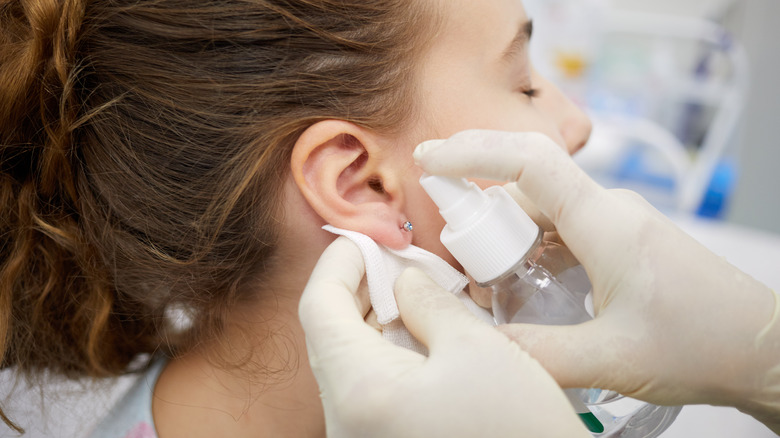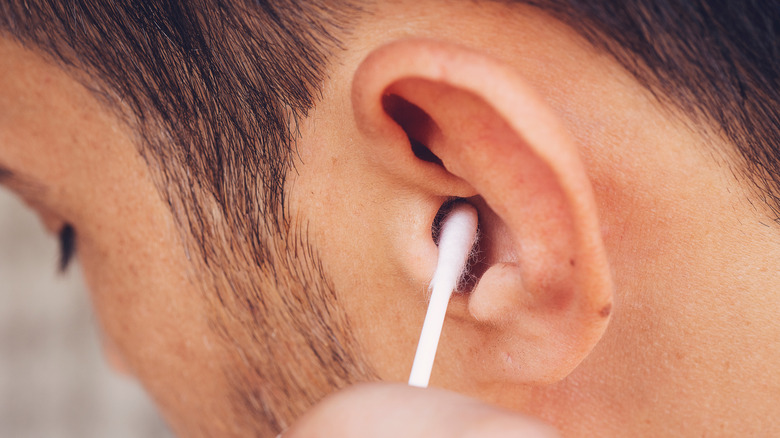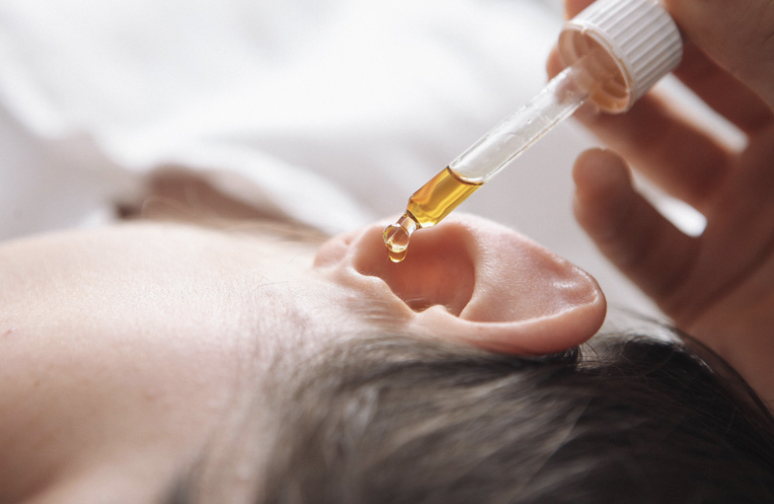The human body has a fascinating way of sending us signals when something isn’t quite right. Sometimes, these signals are obvious—like a fever or a rash—but other times, they appear in more subtle forms. One such subtle signal may come from the wax inside our ears. Although often overlooked or dismissed as simply “gunk,” earwax, also referred to by its medical name cerumen, can offer clues about what’s going on in our bodies. While it’s important to be cautious about self-diagnosing any condition, paying attention to the color, texture, and even odor of earwax can encourage us to seek professional advice when needed. In this article, we’ll explore how earwax forms, what normal earwax typically looks like, and the possible meanings behind a few distinct colors or consistencies—all while keeping the information factual and emphasizing that any concerns should be addressed by a qualified healthcare provider.
The Basics of Earwax: Formation and Function
Before delving into what different types of earwax might indicate, let’s talk about what earwax actually is. Earwax isn’t merely a random build-up of debris; it is a substance produced by glands in the outer ear canal. Composed of a mixture of secretions from these glands, along with sloughed-off skin cells, earwax forms a protective barrier that helps trap dust, dirt, and other foreign particles. This barrier serves as our ears’ self-cleaning mechanism, gradually moving from the inner part of the ear canal to the outer edges, where it can be washed away or gently removed.
In addition to trapping debris, earwax helps lubricate the delicate skin of the ear canal, preventing dryness and irritation. It also plays a minor role in keeping certain bacteria and fungi at bay, thanks to its slightly acidic pH. In other words, earwax is a valuable substance that supports ear health—far from the useless substance many people assume it to be.

Normal Earwax: A Range of Hues and Textures
What does “normal” earwax look like? In reality, there is no single color or texture that applies to everyone. Earwax can vary from person to person due to factors like genetics, age, diet, and environment. Some people naturally have wetter, stickier earwax that is yellow or honey-colored, while others have drier, flakier earwax that might appear pale or light brown. These variations aren’t automatically concerning. Much like hair color or skin tone, earwax simply differs among individuals.
Healthy earwax is often soft and may be yellowish, orange, or light brown. Sometimes it darkens as it accumulates or oxidizes, especially if it has been in the ear canal for a while. Generally speaking, if you notice earwax of these colors—particularly if it remains relatively soft or flaky—there’s no immediate reason to worry. Still, if you ever experience itching, persistent discomfort, discharge, or hearing difficulties, consulting a healthcare professional is wise.

Potential Indicators Based on Earwax Appearance
Below are some commonly discussed earwax characteristics, along with insights into what they might suggest. However, it’s vital to remember that these are general observations rather than definitive diagnoses. If you have concerns about your ear health, a visit to a doctor or an ear, nose, and throat (ENT) specialist is the best course of action.
- Gray Earwax
- Possible Explanation: Earwax can sometimes appear grayish, especially if you live or work in a place with higher levels of dust or pollution. Tiny particles can get trapped in the cerumen, giving it a dull, gray hue.
- When to Seek Help: If the earwax is gray but you do not notice any pain, irritation, or hearing loss, there’s typically little cause for alarm. However, if you experience discomfort or persistent symptoms like itching, it’s best to consult a healthcare provider to rule out inflammation or other issues.
- Earwax with Traces of Blood
- Possible Explanation: Earwax with visible streaks of blood can indicate a range of issues—some minor, some more serious. A common cause might be a small scratch or abrasion in the ear canal, which can happen if you use cotton swabs or other objects to clean your ears. Another possibility is a perforated eardrum (a small tear in the membrane).
- When to Seek Help: Because blood in the ear can signal injury, it’s prudent to consult a medical professional. They can examine your ear canal and eardrum to determine if you have a perforation or another underlying issue.
- Dark Brown or Very Sticky Earwax
- Possible Explanation: Earwax can darken over time, especially as it oxidizes or mixes with naturally shed skin cells. If your earwax is darker and stickier than usual, it may simply mean it’s older and has been in the canal for a while. Some people naturally produce more pigmented earwax, making it appear darker.
- When to Seek Help: A darker color alone is not necessarily alarming. If you do not have any other symptoms—like foul odor, ear pain, or hearing changes—you likely don’t need to worry. However, if the dark earwax is accompanied by unpleasant smells or discomfort, consider seeking professional advice to rule out infection or excessive wax build-up.
- Black Earwax
- Possible Explanation: On rare occasions, earwax can appear black. In some instances, this coloration can be related to the presence of fungal elements or dried blood. There are cases where black earwax might be more prone to fungal infections, but that’s not always the cause. Sometimes, it’s simply very dark cerumen that has oxidized extensively.
- When to Seek Help: If your earwax is black and you notice symptoms like itching, pain, or an unusual odor, consult an ENT specialist. They can confirm whether there is any fungal growth or another condition requiring treatment.
- White or Pale Earwax
- Possible Explanation: A lighter color might indicate drier cerumen or different compositions of fats and skin cells. Some people also interpret white or flaky earwax as a sign of lesser earwax production, which can be normal for them.
- When to Seek Help: If you notice itching, dryness, or irritation in addition to the white or flaky earwax, consider talking with a healthcare professional. Excessive dryness can sometimes be managed through dietary changes (ensuring you have a balanced intake of essential nutrients) and properly hydrating.
- Unusually Strong Odor
- Possible Explanation: Earwax can occasionally have a strong or unpleasant smell if there is an infection in the middle ear or ear canal. Bacterial or fungal infections can lead to discharge that smells sharp or foul.
- When to Seek Help: A strong smell, particularly one accompanied by pain, discharge, or hearing loss, is reason enough to see a doctor. These symptoms could indicate an infection requiring medical intervention.
- Liquid or Runny Earwax
- Possible Explanation: Earwax that appears more liquid than usual might suggest the presence of an infection or excessive moisture in the ear canal. Swimmer’s ear, for instance, is a condition caused by water that remains trapped in the ear, creating an environment where bacteria or fungi can thrive.
- When to Seek Help: If your earwax is runny or watery and you’re noticing discomfort, muffled hearing, or discharge, you should get it checked. A healthcare provider can identify whether you have an infection or another underlying cause.
- Excessively Dry or Flaky Earwax
- Possible Explanation: Dry earwax can result from lower levels of cerumen production or an environment that contributes to dehydration. It can also appear if you consistently clean your ears with cotton swabs, stripping away the protective oils and wax.
- When to Seek Help: Dry, itchy ears can be uncomfortable. If you find yourself experiencing persistent dryness, flaking, or irritation, speak to a medical professional. They might suggest adjusting your diet to ensure you’re getting sufficient essential fats, improving your hydration habits, or using specially formulated ear drops to maintain a healthy ear canal environment.

Maintaining Healthy Ears: Tips and Best Practices
No matter the color or consistency of your earwax, certain practices can help keep your ears in good shape:
- Avoid Overcleaning
The ear canal is self-cleaning. Using cotton swabs, hairpins, or other objects can push wax further in, potentially causing blockages or injuring the delicate ear canal lining. If you feel you have a wax buildup, consult a medical professional for proper removal. - Stay Hydrated
Drinking enough water daily supports overall bodily functions, including the production and consistency of earwax. Dehydration can contribute to excessively thick or dry earwax, leading to discomfort or itching. - Maintain a Balanced Diet
A balanced diet rich in vitamins, minerals, and healthy fats can support normal cerumen production. Nutrients like omega-3 fatty acids, found in foods like fish and walnuts, may help keep the ear canal’s skin moisturized. - Protect Your Ears from Excessive Noise
While noise exposure doesn’t directly affect earwax color, it can damage your hearing over time. Protecting your ears with earplugs or noise-canceling headphones in loud environments maintains overall ear health, which is an essential counterpart to healthy earwax production.

- Monitor for Changes
Pay attention to changes in your earwax, but don’t panic if you notice something slightly different on occasion. A single instance of darker or lighter wax, for example, doesn’t necessarily signal a problem. However, if you have persistent issues—especially those accompanied by symptoms such as ear pain, prolonged itching, hearing difficulty, or foul odors—seek medical advice. - Consider Professional Ear Checks
If you’re prone to excess wax buildup or ear infections, regular check-ups with an ENT specialist or your general doctor can help preempt potential complications. They can advise on safe ear-cleaning methods or treat any infections swiftly.

Final Thoughts: Balancing Caution with Common Sense
While earwax can offer potential insights into our health, it’s important to balance vigilance with realistic expectations. Earwax naturally varies in color and consistency from one person to the next, and not every variation is cause for concern. Use these observations as a gentle prompt to remain mindful of your ear health, and remember that self-diagnosis can be misleading. If you’re ever unsure or if you experience ongoing symptoms—pain, a persistent foul odor, or changes in hearing—consult a healthcare professional.
Our ears do so much more than just detect sounds; they assist us in maintaining balance and protecting our bodies by trapping potential pollutants. By learning more about the role earwax plays and the common signs worth watching, we can become better stewards of our own well-being. Think of your earwax as a subtle messenger, quietly providing hints about the state of your ears. Listen to those hints, but always remember that professional medical advice is the most reliable path whenever a concern arises. With proper care and attention, our ears can remain healthy conduits to the world around us, ensuring we continue to hear and experience life’s many wonders.
